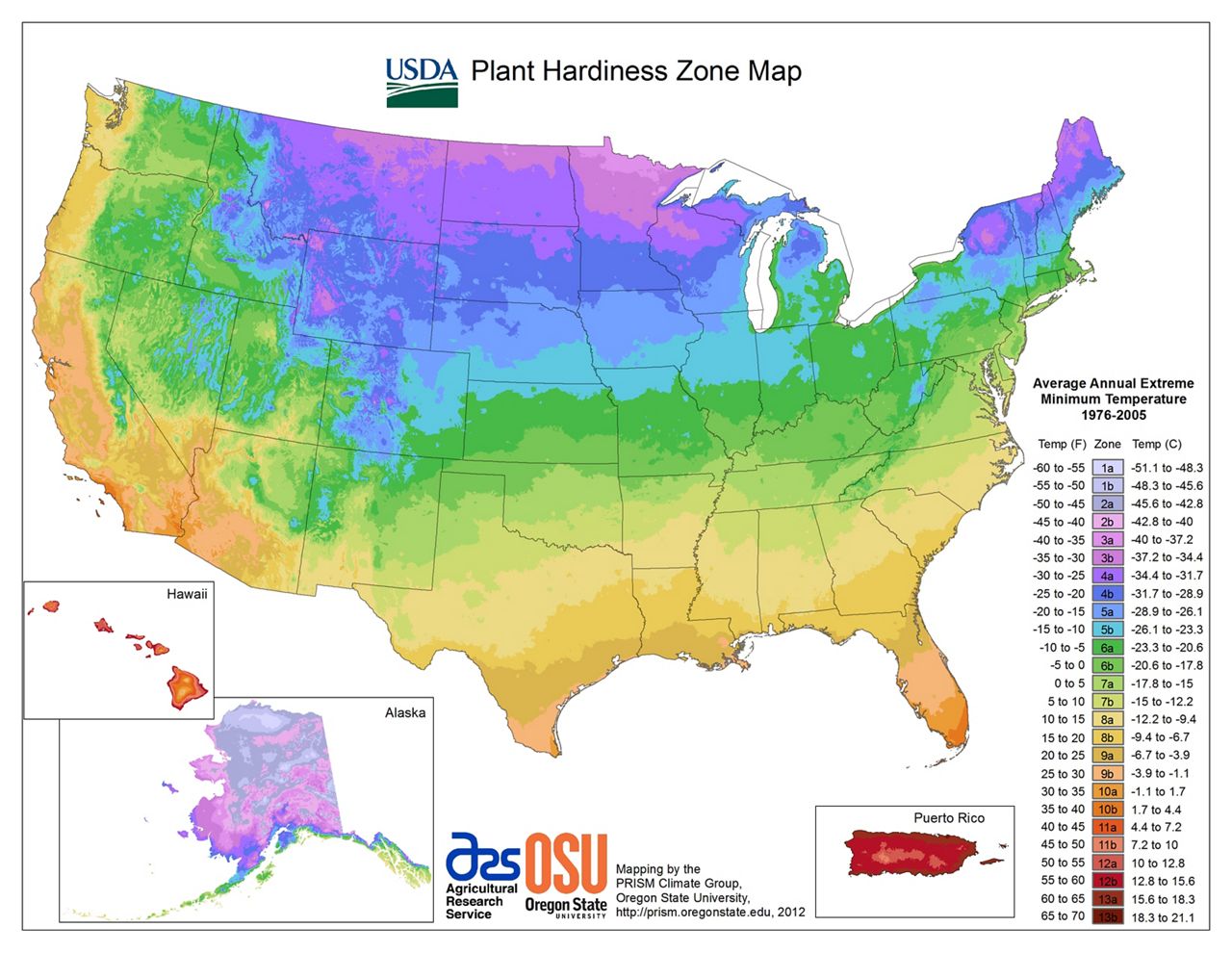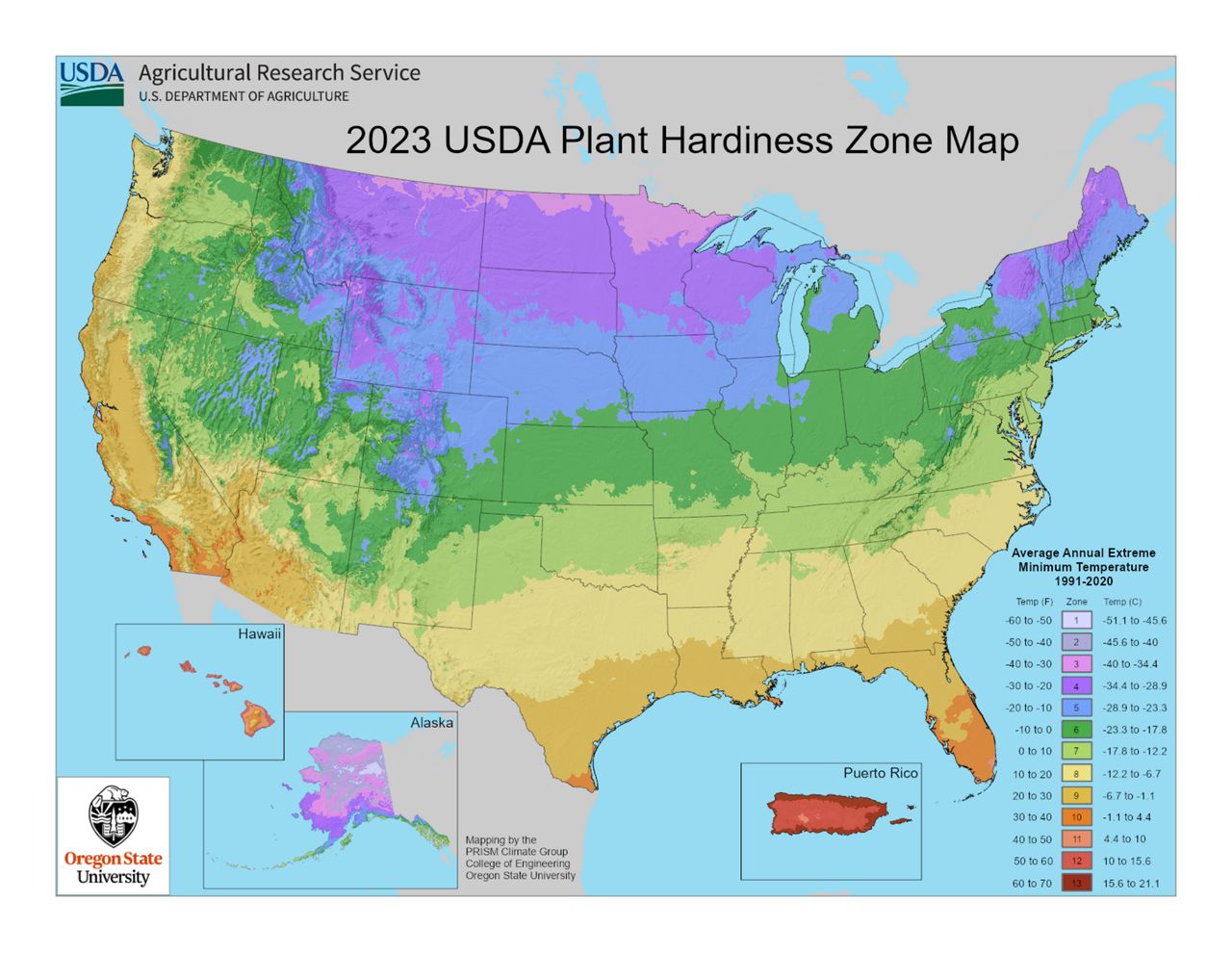Climate data suggests that nighttime and winter temperatures are warming at a greater rate compared to other seasons and compared to daytime afternoon temperatures.
This change in temperatures could have a significant impact on our agriculture and the types of plants you may find in your garden here in Central Florida.
The United States Department of Agriculture (USDA) in conjunction with Oregon State University (OSU) released an updated Plant Hardiness Zone Map earlier in November.
The Plant Hardiness Zones are based on a region’s average annual extreme low temperatures per the USDA.
Each part of the U.S. is designated into zones based on these temperatures.
The zones range from one to thirteen. One is the coldest zone and thirteen are the warmest of the zones.
Each zone has an a and b, which are divided up into five degree increments.
For example, zone 1a is -60 to -55 degrees and zone 1b is -55 to 50 degrees Fahrenheit.
Zone 1 is the coldest and zone 13 is the warmest.
Zone 13a goes from 60 to 65 degrees, and zone 13b is 65 to 70 degrees.
The updated 2023 version is based on the wintertime average extreme low temperatures from 1990 to 2020
This most recent release shows that parts of Central Florida, including Orlando, have shifted from what is known as Hardiness Zone 9b for 1976 to 2005 to 10a based on temperature data from 1990 to 2020.
The USDA does note that some the changes may not all be due to changing climatic conditions, but also due to improved data.
However, this is a significant shift because it shows that our average lowest temperatures for the year have warmed based on the average temperatures from 1990 to 2000.
In two of the previous versions of the USDA Plant Hardiness Zones, all of Central Florida was considered being in 9b, which is an average low temperature range of 25 to 30 degrees.
This does not mean that Central Florida could not or does not get colder than 25 degrees, but that these are the lowest average of the minimum temperatures normally felt in Central Florida in any year during that specific time frame.
However, the new thirty-year averages show that more of Central Florida now may not get as cold as previous decades.
This has led to a larger portion of the region being classified as being in Hardiness Zone 10a, which is an average of low temperatures between 30 to 35 degrees.
This again does not mean that temperatures cannot and will never get below 30 degrees, however, it does suggest it is not as common as it once was in previous decades of climate records.

Our team of meteorologists dives deep into the science of weather and breaks down timely weather data and information. To view more weather and climate stories, check out our weather blogs section.

